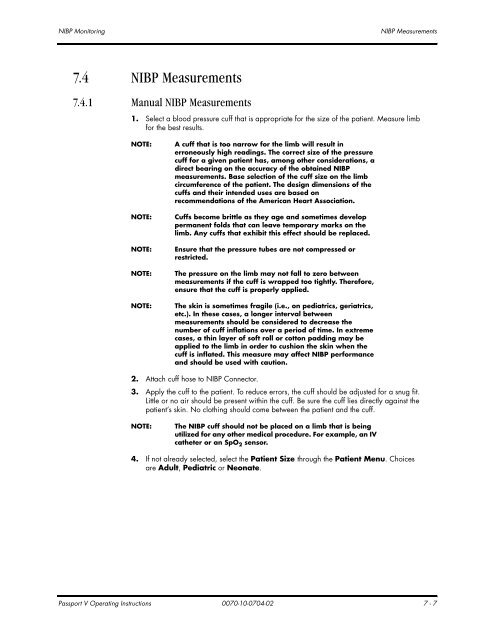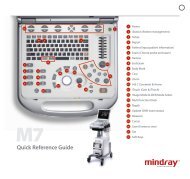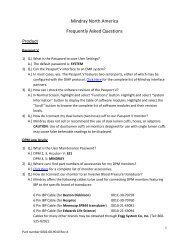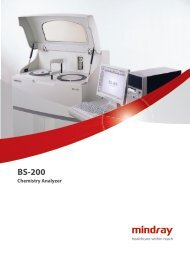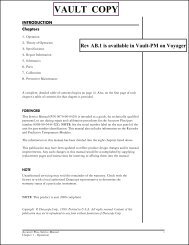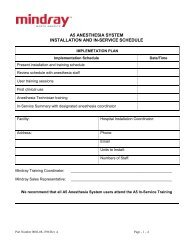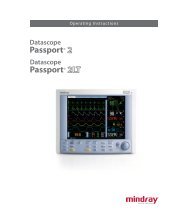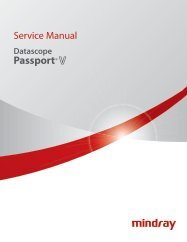Passport® - Mindray
Passport® - Mindray
Passport® - Mindray
- TAGS
- mindray
- res.mindray.com
You also want an ePaper? Increase the reach of your titles
YUMPU automatically turns print PDFs into web optimized ePapers that Google loves.
NIBP Monitoring NIBP Measurements<br />
7.4 NIBP Measurements<br />
7.4.1 Manual NIBP Measurements<br />
1. Select a blood pressure cuff that is appropriate for the size of the patient. Measure limb<br />
for the best results.<br />
NOTE: A cuff that is too narrow for the limb will result in<br />
erroneously high readings. The correct size of the pressure<br />
cuff for a given patient has, among other considerations, a<br />
direct bearing on the accuracy of the obtained NIBP<br />
measurements. Base selection of the cuff size on the limb<br />
circumference of the patient. The design dimensions of the<br />
cuffs and their intended uses are based on<br />
recommendations of the American Heart Association.<br />
NOTE: Cuffs become brittle as they age and sometimes develop<br />
permanent folds that can leave temporary marks on the<br />
limb. Any cuffs that exhibit this effect should be replaced.<br />
NOTE: Ensure that the pressure tubes are not compressed or<br />
restricted.<br />
NOTE: The pressure on the limb may not fall to zero between<br />
measurements if the cuff is wrapped too tightly. Therefore,<br />
ensure that the cuff is properly applied.<br />
NOTE: The skin is sometimes fragile (i.e., on pediatrics, geriatrics,<br />
etc.). In these cases, a longer interval between<br />
measurements should be considered to decrease the<br />
number of cuff inflations over a period of time. In extreme<br />
cases, a thin layer of soft roll or cotton padding may be<br />
applied to the limb in order to cushion the skin when the<br />
cuff is inflated. This measure may affect NIBP performance<br />
and should be used with caution.<br />
2. Attach cuff hose to NIBP Connector.<br />
3. Apply the cuff to the patient. To reduce errors, the cuff should be adjusted for a snug fit.<br />
Little or no air should be present within the cuff. Be sure the cuff lies directly against the<br />
patient’s skin. No clothing should come between the patient and the cuff.<br />
NOTE: The NIBP cuff should not be placed on a limb that is being<br />
utilized for any other medical procedure. For example, an IV<br />
catheter or an SpO 2 sensor.<br />
4. If not already selected, select the Patient Size through the Patient Menu. Choices<br />
are Adult, Pediatric or Neonate.<br />
Passport V Operating Instructions 0070-10-0704-02 7 - 7


